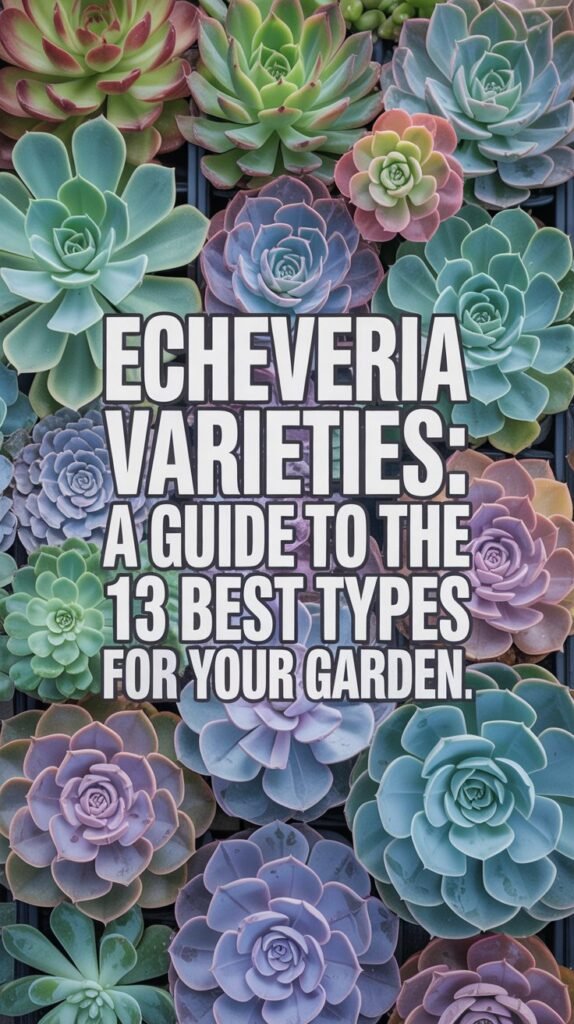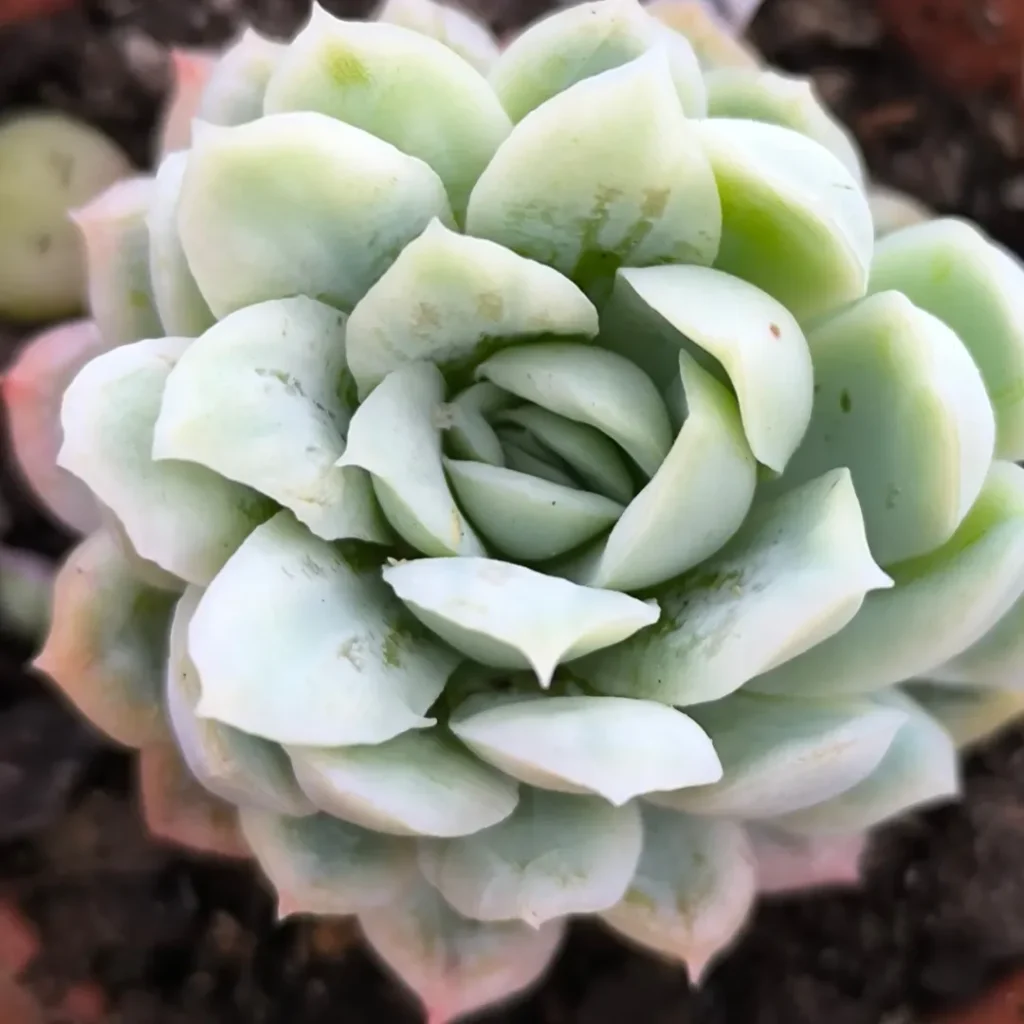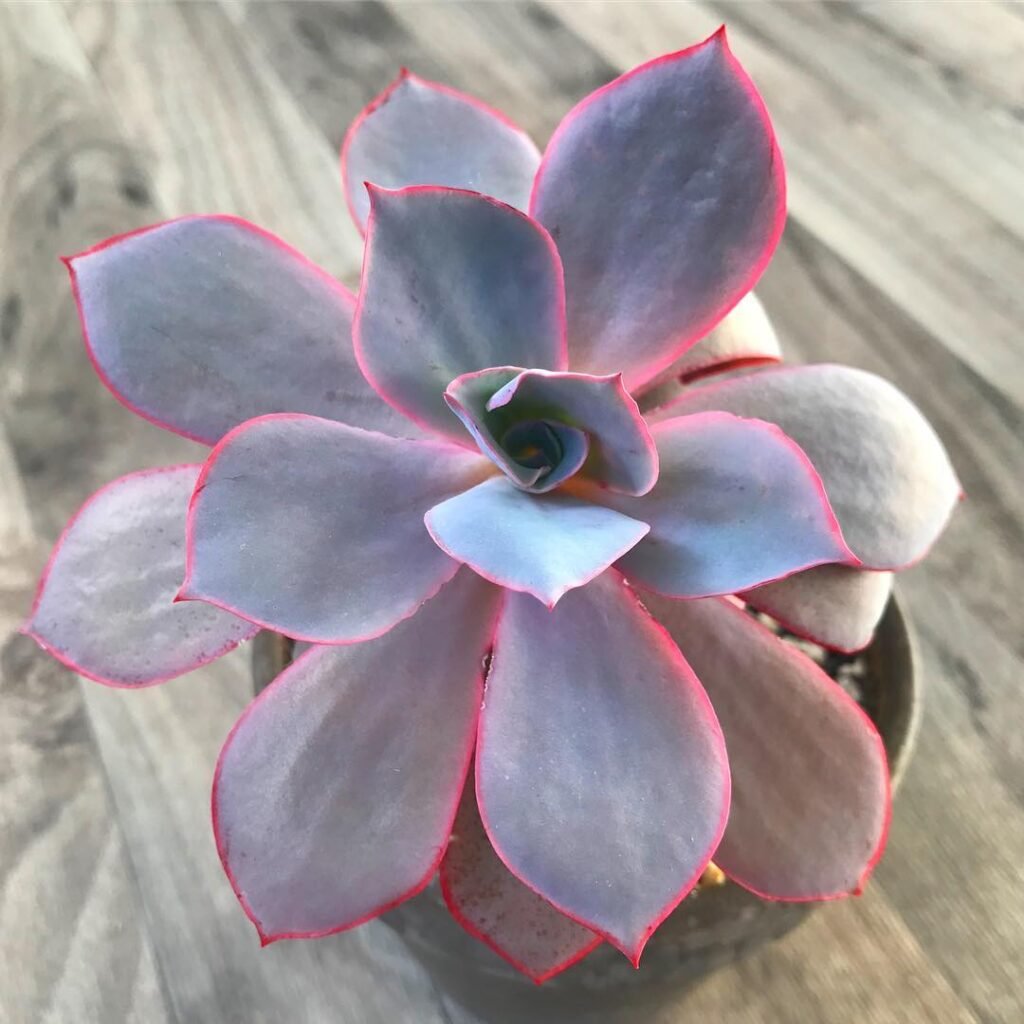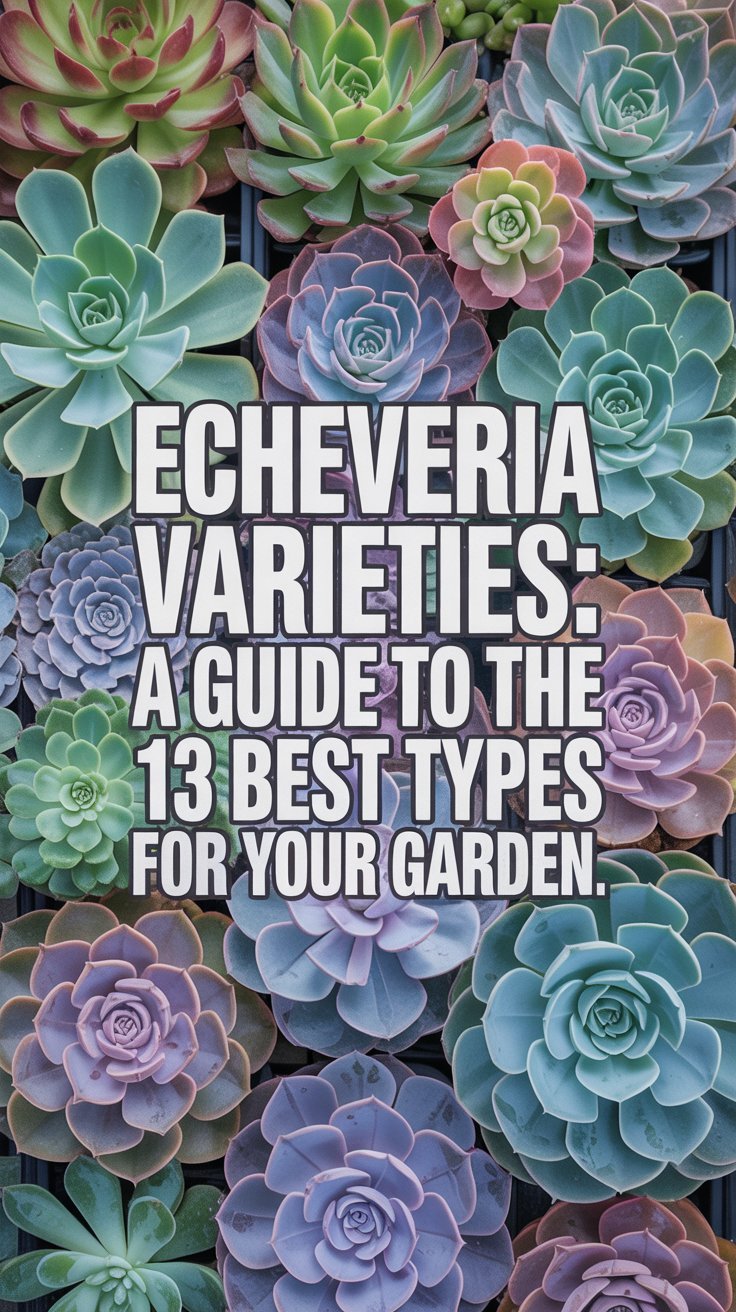Discover the most beautiful Echeveria varieties, learn how to identify them, and get expert tips on care and propagation. Perfect for beginners and pros!

Hi there! I’m Ashley Scott, and I’ve been gardening for over 10 years. One of my absolute favorite plants to grow is Echeveria because they’re so pretty and easy to take care of. These succulents look like little rosettes, almost like flowers made of thick leaves, and they come in all sorts of amazing colors. Whether you want to brighten up your garden or keep a cute plant on your windowsill, Echeveria is perfect. In this article, I’ll tell you about some of the best Echeveria varieties, how to spot them, and tips to keep them happy. Let’s dive in!
What Are Echeveria?
Echeveria are special succulents that come from dry, sunny places like Mexico and Central America. They grow in a cool rosette shape, with leaves that are thick and hold water. That’s why they don’t need much watering! You can find them in colors like green, blue, pink, purple, and even black. People love them because they’re tough, don’t take much work, and look awesome indoors or outside. I’ve got a few in my house, and they always make me smile.
Popular Echeveria Varieties with Names
There are tons of Echeveria varieties out there, and each one has its own personality. Here are some of the most popular ones you might see:
1. Echeveria Lola

This one’s super pretty with pale, almost white leaves that have a tiny bit of pink. It grows in a tight rosette, like a flower you’d draw. I keep one by my window, and everyone who visits asks about it!
2. Echeveria Perle von Nurnberg

This variety is a show-off with its pink and purple leaves. It has a powdery look that makes it glow in the sunlight. It’s one of the best Echeveria varieties if you want something colorful.
3. Echeveria Black Prince

For a darker vibe, check out ‘Black Prince.’ Its leaves are deep green, almost black, and pointy. It’s great for mixing with lighter plants.
4. Echeveria Elegans

People call this the “Mexican Snowball” because its leaves are round and silvery-blue. It’s super easy to grow, so it’s perfect if you’re just starting out.
5. Echeveria Topsy Turvy

Have you ever seen a plant that looks upside down? That’s ‘Topsy Turvy’! Its leaves curl down in a wavy way, making it really fun to look at.
6. Echeveria Imbricata

This one has big, flat rosettes with blue-green leaves. It grows fast and makes baby plants, so you can share them with friends.
7. Echeveria Doris Taylor

If you like fuzzy stuff, you’ll love this one. Its leaves feel soft and velvety, and the tips turn red in the sun.
8. Echeveria Rainbow

This variety is like a surprise—it changes colors! Its leaves can be green, pink, yellow, or orange, depending on the light and time of year.
9. Echeveria Afterglow

This is one of the large Echeveria varieties, growing up to a foot wide. Its leaves are lavender-pink with glowing edges—super dramatic!
10. Echeveria Gibbiflora

Another big one, ‘Gibbiflora’ has wavy, spoon-shaped leaves that can be green, red, or purple. It’s tall and striking.
Want to see what these look like? Check out pictures on our Succulent Guide page!
How to Identify Echeveria Varieties
With so many Echeveria varieties, how do you tell them apart? Here’s an Echeveria identification chart in words to help you:
- Leaf Shape: Some are pointy (like ‘Black Prince’), some are round (like ‘Elegans’), and others are wavy (like ‘Topsy Turvy’).
- Color: Look for green, blue, pink, purple, or even black. Echeveria colors are a big clue!
- Size: Small ones stay under 3 inches, medium ones are 3-6 inches, and big ones like ‘Afterglow’ go over 6 inches.
- Texture: Some are fuzzy (‘Doris Taylor’), some are powdery (‘Perle von Nurnberg’), and some are smooth.
If you’re still confused, our Succulent Identification Guide can help you match your plant!
Rare and Unique Echeveria Varieties
Some rare Echeveria varieties are harder to find but totally worth it:
1. Echeveria Compton Carousel

This one has cream and green striped leaves. It grows slow, but it’s so cool-looking.
2. Echeveria Laui

With thick, powdery blue leaves, ‘Laui’ is a rare beauty. It’s picky about water, so it’s best for pros.
3. Echeveria Cubic Frost

This variety has lilac-colored leaves that curl up in a boxy shape. It’s like a little sculpture!
These special ones can make your collection stand out.
Caring for Your Echeveria
Echeveria are pretty easy to care for, but here’s what they need:
Watering
Since they’re succulents, they don’t need much water. I once overwatered mine and the leaves got mushy—oops! Now I wait until the soil’s dry before adding more. Use a pot with holes and fast-draining soil.
Sunlight
They love sunshine! Put them where they get lots of light, like a sunny window or outside. Too little light makes them stretch out and look weird.
Soil
Use cactus or succulent soil, or mix regular dirt with sand. It’s gotta drain well so the roots don’t rot.
Temperature
They like it warm, between 65-80°F. If it gets cold (below 50°F), bring them inside.
Propagation
You can make more plants from leaves or baby offsets. It’s so fun! Learn how in our How to Propagate Succulents guide.
Check out more tips from the University of California Agriculture site.
Common Problems and Solutions
Sometimes things go wrong, but don’t worry—I’ve got fixes:
Overwatering
If the leaves turn yellow and soft, you’re watering too much. Let the soil dry out and cut back.
Pests
Little bugs like mealybugs might show up. Wipe them off with a cotton swab and some rubbing alcohol.
Leggy Growth
If your plant gets tall and skinny, it needs more sun. Move it to a brighter spot.
The Cactus and Succulent Society has great advice if you need more help.
Tips for Beginners
New to Echeveria? Start with ‘Elegans’ or ‘Imbricata’—they’re super forgiving. Here’s what to remember:
- Don’t water too much.
- Give them lots of light.
- Use the right soil.
You’ll be a pro in no time! I started with one plant, and now I’ve got a whole shelf full.
Conclusion
Echeveria varieties are some of the coolest plants around. Whether you pick a popular one like ‘Perle von Nurnberg’ or a rare gem like ‘Compton Carousel,’ they’re sure to make your space prettier. They’re tough, beautiful, and so much fun to grow. Want to learn more? Explore USA Garden Hub for tons of gardening ideas, and start growing your own Echeveria today!




